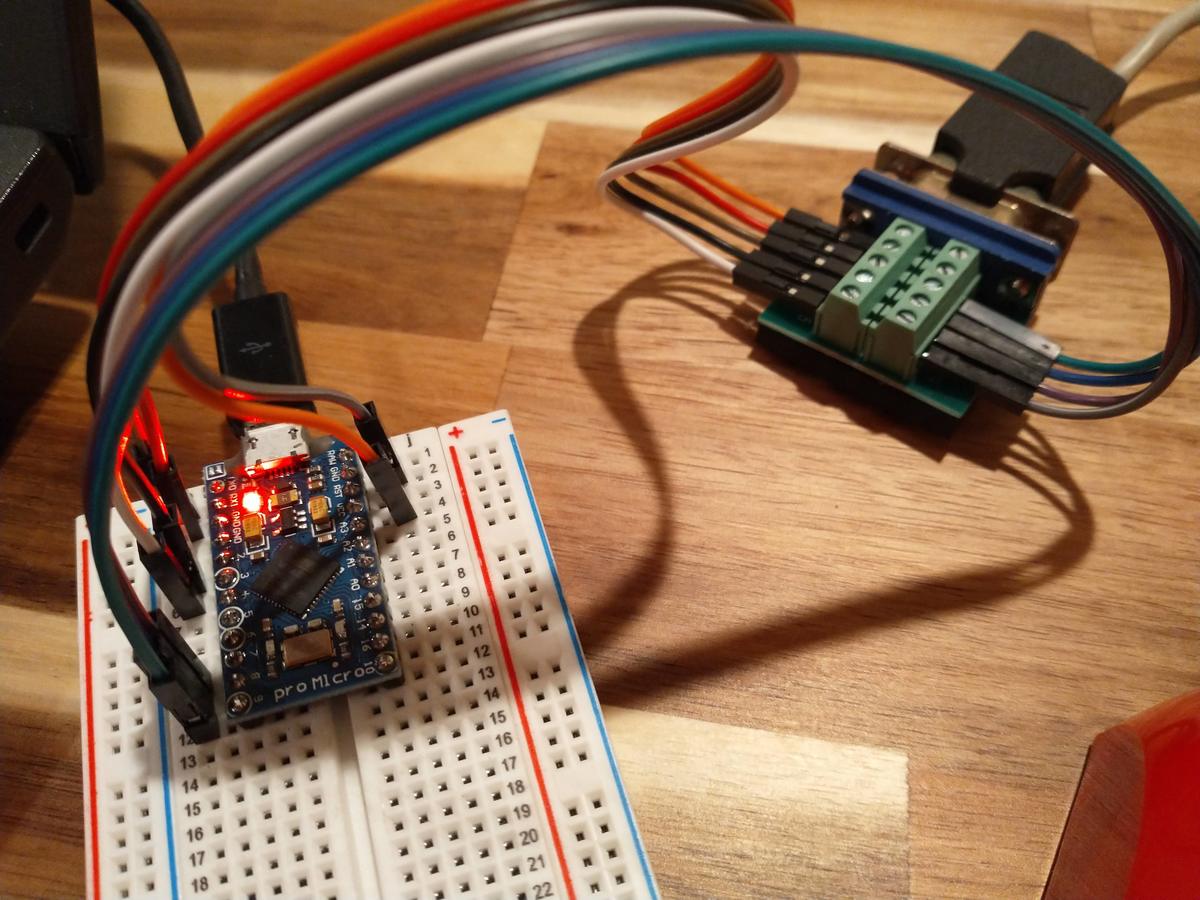Posted 2021/8/6
A USB Adapter for a Depraz Mouse
The Depraz mouse is a damn stylish piece of equipment:

Produced in the early 1980s, it was used in several systems, but to me the most interesting was the Blit and its descendants, the DMD 5620 and others. (By the way, if anyone who happens to read this should have one of these terminals for sale… contact me!)
I recently acquired one from Ron Minnich. The mouse was ex-Bell Labs, previously in the ownership of the late Jim McKie. I admired Jim and was very happy to have the mouse purely as an artifact, but I’ve also always wanted to try using one…
The mouse has a male DE-9 connector. This might make you assume it speaks the same serial mouse protocol we all knew and loved back in the 90s, but you’d be wrong–and the first hint should have been that it’s a male connector, when all those serial mice had female connectors.
I had to post on the TUHS mailing list for help, but I was quickly pointed at this page, which informed me that the mouse is one of those old-fashioned types which directly expose the outputs of their quadrature encoders over the connector. The pinout is:
- Pin 1: +5V
- Pin 2: Y1 encoder
- Pin 3: Y2 encoder
- Pin 4: X1 encoder
- Pin 5: X2 encoder
- Pin 6: GND
- Pin 7: Middle mouse button
- Pin 8: Right mouse button
- Pin 9: Left mouse button
Using a DE-9 breakout adapter, I wired the mouse to an Arduino Pro Micro:

Getting the software right took some work, primarily because I spent a lot of time fooling around with some dumb code I got from Sparkfun. Once I threw that away and implemented some simple logic that just checks the falling edge on one Y-axis pin and one X-axis pin and figures out the mouse direction at that point, everything worked beautifully.
The code is at github.com/floren/depraz-arduino. I believe it should be suitable for use with any quadrature mouse, provided you wire it up properly; if I can get my hands on an original Macintosh mouse, I’ll see if my guess is correct.

You can see a demo below:
How is it to use? Well, I’m still getting used to it, but it’s definitely a pleasant shape in the hand, and the buttons have a very satisfying clickiness to them. I intend to use it for a while on my work computer and see how I like it long-term.
Bonus: Old-fashioned Wine Capsules
I opened the mouse up several times over the course of my experimentation. The first time, I immediately noticed two things: the red plastic shell was quite heavy just by itself, and that there was a big piece of duct tape on the inside of the shell.

Curious, I peeled back the tape.

At first, I thought they were pieces of beer cans, but then I pulled some out and realized that they were wine capsules, the official name for those pieces of foil which go over the cork of a bottle of wine. It turns out that up into the 1980s, these wine capsules were actually made of lead, not the lightweight foil we get these days. Someone had put them inside the mouse, presumably to add a bit more heft–which I do find quite pleasant.
I mentioned this on TUHS, and Norman Wilson soon replied that he may have been responsible:
The mouse with wine-bottle lead foil in the top may have
been my fault. I did that to two of them--at home and in
my office--because I found a little more pressure made
the ball track better.
Of course it’s not guaranteed that Norman once owned this mouse, but since he did put wine capsules into two mice while working at Bell Labs, I’m going to assume it was him. I now know more about the history of this mouse than most cars I’ve owned…